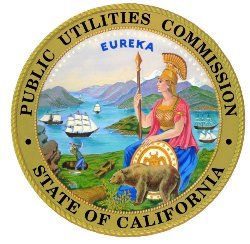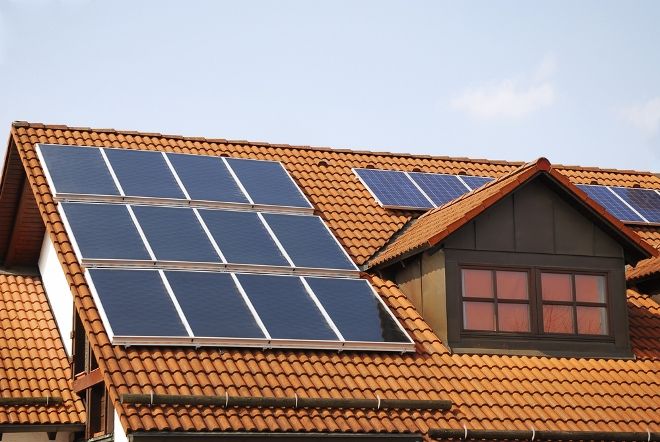California Solar Initiative: overhyped and underperforming
Now that the $2.167 billion California Solar Initiative is winding down, electricity ratepayers might ask: What was it and what did it accomplish? Was it:
1.) A cutting edge solar energy project to bring about a “self-sustaining” solar power industry, as touted by the California Public Utilities Commission (CPUC) and state legislators?
The answer is mostly no based on post-project evaluations done by academic experts.
2.) A program to replace very expensive conventional peak time power plants with equally expensive but clean rooftop solar electricity that is generated at the time of day when it is hottest?
The answer is no. Contending that rooftop solar power replaces conventional peak time power is bogus. This is because electricity rates are tiered depending on usage and climate zone and the fact that ultra peak power rates during heat waves and cold snaps only last maybe as much as four weeks out of 52 weeks in a year.
3.) An expensive, artificial green energy and jobs program that is now being wound down, as there is a recovery in the jobs market?
The answer is yes. Since California’s Solar Initiative did not produce a self-sustaining rooftop solar power market (Question No. 1) and cannot be justified as a replacement for expensive peak time electricity, this leaves us with one conclusion: It was mainly a jobs stimulus program that ended up adding about a $200 tax to 10.8 million utility customers’ electric bills.
Public Utilities Commission fudges the numbers
 Here’s the background for these conclusions:
Here’s the background for these conclusions:
In 2001, the CPUC came out with a report, “California Solar Initiative Cost-Effectiveness Evaluation.” The report said that the CSI was a success because it reduced the subsidy for installing solar panels on a house from $2.50 to $0.20 per kilowatt installed. Success was measured by how losses were reduced, not by the actual market price of solar power without subsidies.
The CPUC website fails to clarify that cost of $6.16 per kilowatt is the cost installed, not the regulated price that consumers pay for electricity. What is called “net or reverse metering” — selling excess solar power back into the electricity grid — means that most customers have low electricity bills.
Dr. Severin Borenstein of the UC Berkeley Energy Institute reports that a rooftop solar power lifetime installation costs $86,000 to $91,000, but the value of the power produced over its lifetime is only $19,000 to $51,000.
What Californians actually pay for electricity rates is highly manipulated by what tier of energy use a customer falls into. Rates range from $0.13 to $0.34 per kilowatt-hour depending on usage and what climate zone a customer lives in. The California Public Utilities Commission failed to report what the retail price of rooftop solar power was both with and without subsidies. Presumably, if the retail price was lower than conventional “dirty” power sources the CPUC would have reported that, but it didn’t.
But has weaning electricity customers off large solar power subsidies worked? Did the Solar Initiative create a growing market for solar energy?
Millions of utility customers subsidize solar installations
Of course, the CPUC omitted disclosing that the $6.16 per kilowatt cost of installing rooftop solar power came by adding $2.167 billion to the electricity bills of other California electricity ratepayers. To provide subsidies to the 118,303 recipients of residential, commercial and governmental rooftop solar power installations the electricity bills had to be raised for 10.8 million customers of Southern California Edison, Pacific Gas and Electric (PG&E) and San Diego Gas and Electric (SDG&E) through its subsidiary the California Center for Sustainable Energy (CCSE).
In other words, the Solar Initiative mandated on average about 91 other electricity customers to subsidize the rooftop solar installations of each rooftop solar power installation. Spread over 10.8 million customers, that equates to about a $200 tax per California electricity customer. The California Solar Initiative is another socialized system like Social Security that is based on a larger base of utility ratepayers paying for a smaller number of recipients. It is a program based on privatizing profits and socializing losses.
Thus, the $6.16 per kilowatt cost installed and 43,000 solar-energy-related jobs created by the California Solar Initiative are artificial and not market-based. The program could never have become self-sustaining in the first place.
What has the Solar Initiative accomplished?
 In his report “The California Solar Initiative is Ending, What Did It Leave Behind?” Borenstein (right) offers several conclusions:
In his report “The California Solar Initiative is Ending, What Did It Leave Behind?” Borenstein (right) offers several conclusions:
“So, as the CSI fades away, is residential solar PV (photovoltaic) on stable footing going forward? Probably not. The tax credits are under constant pressure in Washington. The very-steep increasing-block rates seem unlikely to continue, primarily because the tiers don’t reflect real cost differences of supplying power. The power purchase agreements don’t lower the basic costs of residential solar, though they do reduce the customer’s risk from poor PV system performance or a utility rate spike.”
Borenstein says the only benefit gained from California’s Solar Initiative is that the cost of manufacturing solar panels has dropped substantially. But how long will that last without a constant flow of subsidies to retain trained installation crews?
Did the Solar Initiative grow the rooftop solar power market? Borenstein’s answer:
“Unlikely. The entire capacity installed under the CSI is less than 2% of the worldwide PV panel installations since 2007.”
In a previous paper written in 2008, Borenstein also studied whether rooftop solar installations were clustered in areas that would have reduced transmission congestion and the need for investments in new transmission infrastructure? Borenstein found that rooftop solar was not clustered in the most valuable locations.
The rooftop solar installations completed under the Solar Initiative were not prioritized by geography to reduce grid congestion or eliminate the need for existing transmission lines. Solar-powered houses still need redundant conventional power hookups because sometimes solar panels are in the shade due to cloud cover, windstorms or smog.
But doesn’t rooftop solar replace pricey peak power?
But does rooftop solar power replace expensive and polluting conventional peak power plants (coal, natural gas, oil)? Does it replace expensive but non-polluting industrial solar farms that blight California’s natural deserts?
Peak power is high-priced power resulting from spikes in demand for electricity due to a heat wave, cold snap, power outage from a blackout due to system failure, or from regulations that create a “pricing fever” such as occurred during the California energy crisis of 2001.
Peak power can be contrasted with “base load power,” which is the power needed to meet the energy demands on typical days.
The average price of peak power in California on July 4, 2013 according to “Energy News Data” website ranged from about $7.10 to $49.70 per megawatt hour (or $0.07 to $0.49 per kilowatt hour). The average retail price for non-peak electricity in California is $0.15 per kilowatt-hour as of April 2013. Some of California’s peak power is imported from the Columbia River, the Klamath River, and coal power plants in Arizona, Nevada and Utah.
 Peak prices can spike to $250 per megawatt hour (or about $25 per kilowatt hour) during the hot July and August months in California. So heavily subsidized rooftop solar power may look like a real deal. But such peak prices typically only last for one to two weeks or so during the year.
Peak prices can spike to $250 per megawatt hour (or about $25 per kilowatt hour) during the hot July and August months in California. So heavily subsidized rooftop solar power may look like a real deal. But such peak prices typically only last for one to two weeks or so during the year.
And when the sun doesn’t shine or rain or dust storms reduce solar power output, redundant gas-fired power plants have to be available at an instant to back-up roof top solar power. Back up power — also called “spinning reserves” — doesn’t come cheap because it has to be on stand-by 24/7/365 but can recover its costs only over a very short period of high demand. And back-up power availability means that California rooftop solar power is not actually reducing air pollution. California solar power is merely exporting its pollution by stealth to nearby states just as it does with conventional power.
The dirty secret of all green power is that it does not eliminate backup power plants having to stay on standby and emitting air pollution in the process. So rooftop solar power does not appear to be justifiable or self-sustainable on the basis that it is a cheaper or cleaner source of peak-time power.
Solar advocates have new scheme for post-subsidy sales
Now that subsidies for rooftop solar power are being phased out, the solar energy industry is trying to push subprime energy home loans on unsuspecting homeowners. Has California learned nothing from its catastrophe with subprime residential housing loans?
The solar industry asserts that the bulk of California rooftop solar panels were installed in middle-class ZIP codes and were not just for wealthy homeowners. But the top 20 ZIP codes for residential rooftop solar installations subsidized by the Solar Initiative all were in wealthy ZIP codes and represented 10.3 percent of all the 118,303 installations under the program (see table below). Of a total of 2,591 ZIP codes in California, 20 wealthy ZIP codes ended up with a disproportionately high proportion of rooftop solar installations (data excerpted from interactive website of California Solar Initiative by author). This phenomenon of green-energy subsidies helping the wealthy should be familiar to CalWatchdog readers.
This is why the Little Hoover Commission is calling for a “time out” for all green power in California. The California Solar Initiative was an expensive, artificial jobs and clean-energy program that needs to be seen for what it really was. The California Solar Initiative should be left in the shade where it belongs.
|
Zip Code
Place
|
Megawatts/
Houses
(@1,000 houses) |
No. of Installations
|
Incentive
|
Project Cost
|
Median Household Income
|
Percent over $100,000 per year
|
|
93619
Clovis
|
5.5 mW
5,500 houses
|
792
|
$4,153,762
|
$38,407,533
|
$83,585
|
39.5%
|
|
93312
Bakersfield
|
4.6 mW
4,600 houses
|
820
|
$2,260,021
|
$30,533,408
|
$77,433
|
31.8%
|
|
92562
Murrieta
|
4.4 mW
4,400 houses
|
718
|
$3,336,984
|
$29,417,715
|
$77,333
|
34.4%
|
|
92270
Rancho Mirage
|
4.4 mW
4,400 houses
|
488
|
$4,310,627
|
$29,039,530
|
$68,301
|
35.3%
|
|
92064
Poway
|
4.3 mW
4,300 houses
|
672
|
$3,719,692
|
$31,343,102
|
$86,832
|
43.6%
|
|
92592
Temecula
|
4.1 mW
4,100 houses
|
721
|
$2,958,823
|
$27,578,618
|
$84,918
|
42.6%
|
|
93314
Rosedale
|
4.0 mW
4,000 houses
|
610
|
$2,161,372
|
$26,983,616
|
$84,907
|
40.6%
|
|
93611
Clovis
|
3.7 mW
3,700 houses
|
673
|
$2,509,955
|
$26,085,269
|
$78,724
|
32.8%
|
|
95762
El Dorado Hills
|
3.6 mW
3,600 houses
|
678
|
$2,189,818
|
$25,431,186
|
$103,820
|
52.4%
|
|
95648
Lincoln
|
3.3 mW
3,300 houses
|
710
|
$2,149,668
|
$23,245,492
|
$69,476
|
28.7%
|
|
92065
Ramona
|
3.2 mW
3,200 houses
|
524
|
$2,212,621
|
$22,089,203
|
$74,735
|
31.9%
|
|
95120
San Jose
|
3.2 mW
3,200 houses
|
667
|
$1,973,022
|
$22,202,507
|
$154,021
|
74.3%
|
|
93536
Lancaster
|
3.1 mW
3,100 houses
|
628
|
$2,095,301
|
$21,061,416
|
$67,930
|
28.5%
|
|
94550
Livermore
|
3.0 mW
3,000 houses
|
600
|
$2,060,530
|
$22,154,201
|
$95,421
|
47.5%
|
|
93,711
Fresno
|
2.9 mW
2,900 houses
|
439
|
$1,857,210
|
$20,513,432
|
$68,746
|
31.4%
|
|
95,466
Philo
|
2.8 mW
2,800 houses
|
517
|
$1,858,744
|
$20,124,364
|
$42,462
|
17.1%
|
|
95070 Saratoga
|
2.7 mW
2,700 houses
|
510
|
$2,197,297
|
$20,457,234
|
$179,963
|
74.5%
|
|
93720
Fresno
|
2.7 mW
2,700 houses
|
475
|
$1,757,237
|
$19,095,096
|
$79,185
|
35.7%
|
|
92028
Fallbrook
|
2.7 mW
2,700 houses
|
476
|
$1,850,804
|
$19,000,749
|
$56,659
|
25.3%
|
|
94558
Napa
|
2.7 mW
2,700 houses
|
426
|
$2,719,552
|
$21,165,141
|
$72,356
|
33.7%
|
|
Data Source: California Solar Initiative – Statistics. Data analysis by author.
|
||||||
Related Articles
UC Davis Stats Falsifier Arrested
DEC. 15, 2010 By K. LLOYD BILLINGSLEY Jennifer Beeman, the former UC Davis official who falsified campus sexual assault statistics,
Schwarzenegger Carbon Footprint ↑
John Seiler: Here’s the latest on the Schwarzenegger split: It now definitely looks like Arnold Schwarzenegger’s estranged wife Maria Shriver




